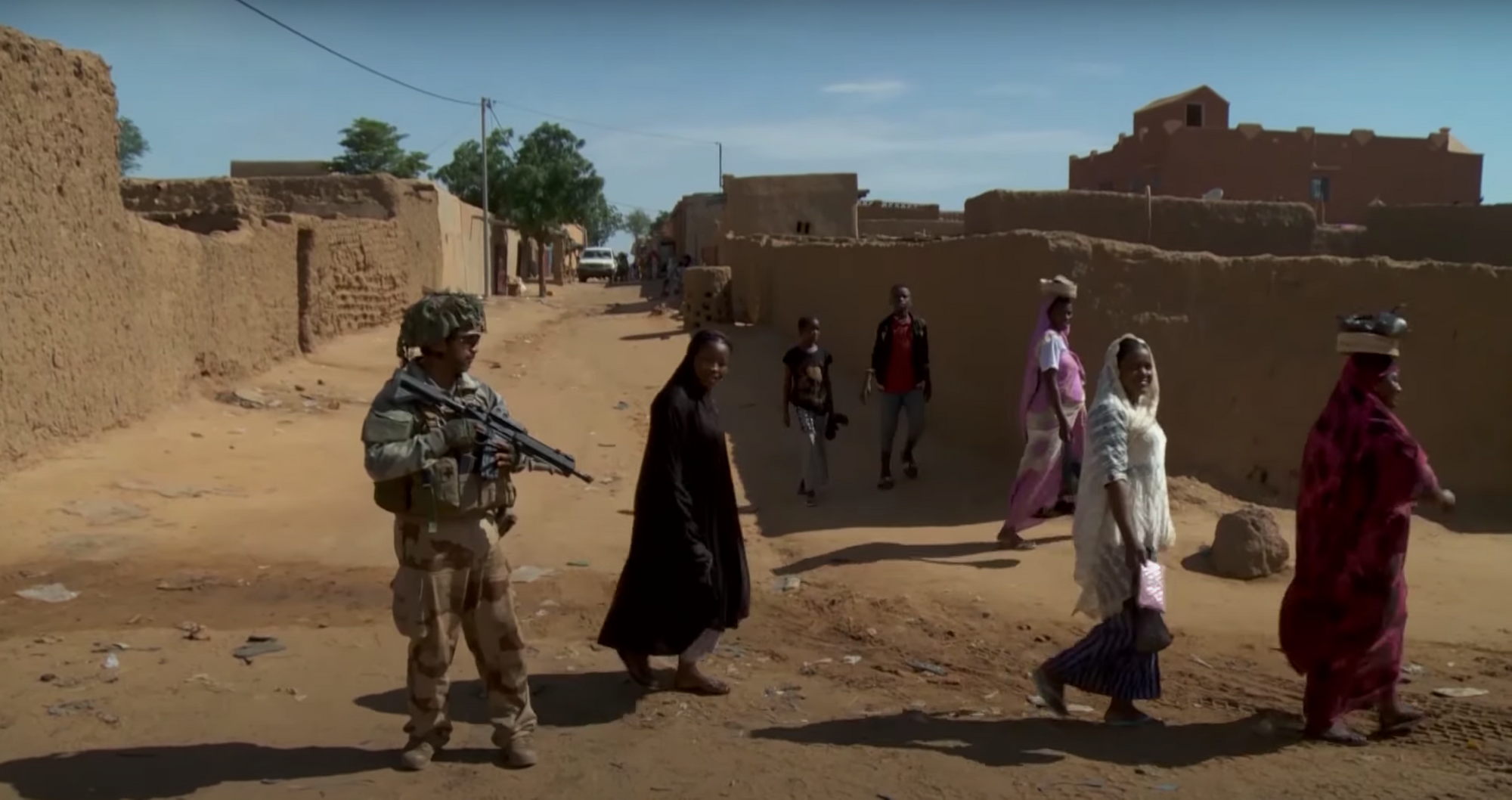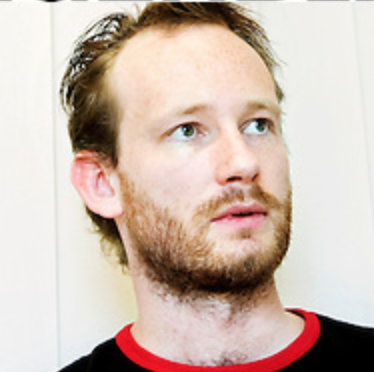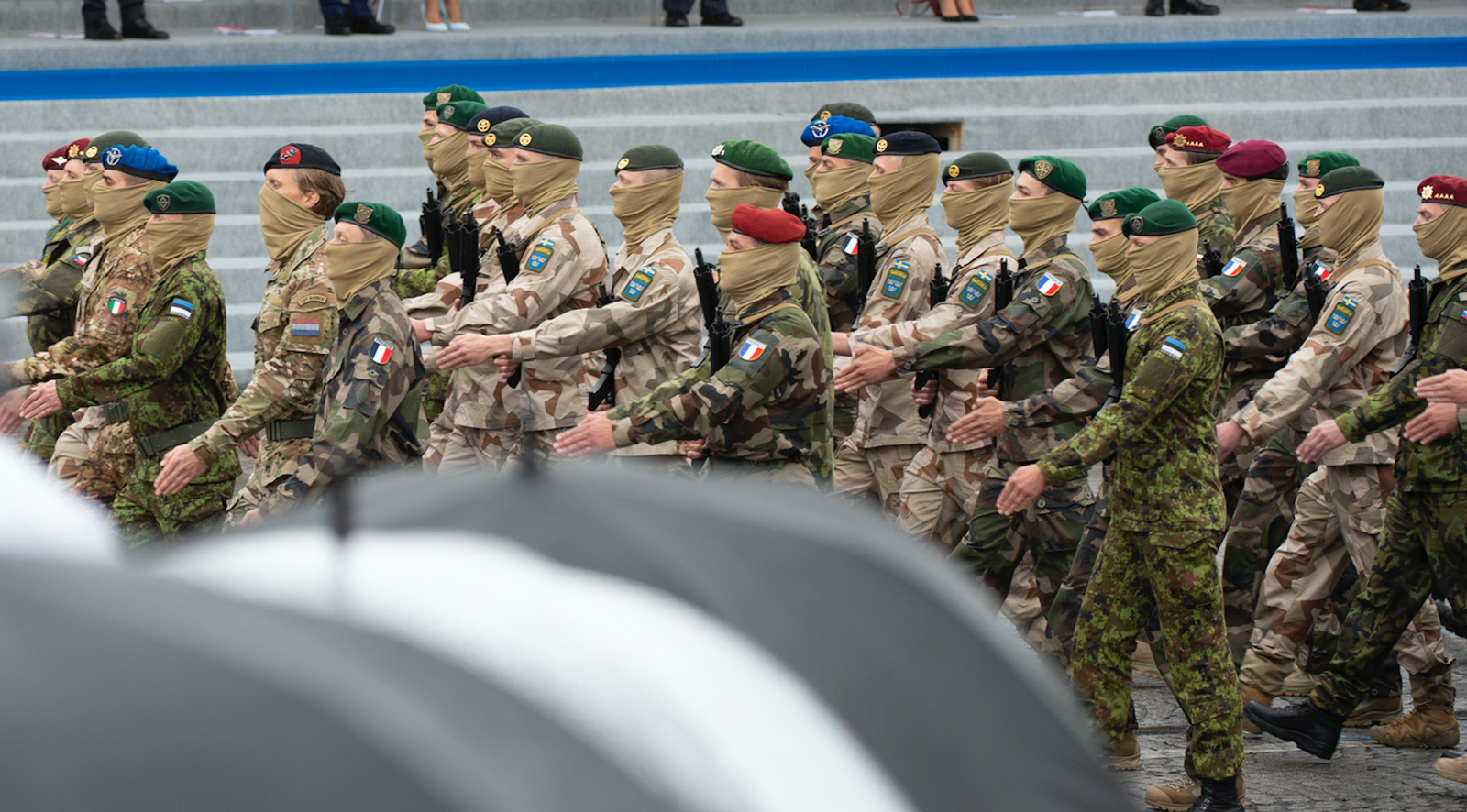Military coups, terrorist groups, ethnic conflict, great power rivalry and rampant smuggling of drugs and migrants –the Sahel region seemingly has it all.
This article attempts to give a comprehensive overview of some of the main drivers behind the current instability in the Sahel region, as well as presenting some of it’s main actors. The article also shortly discusses why the Sahel-region most likely will continue to be important for the West - despite the current lack of appetite for out-of-area operations following the Afghanistan debacle. Also note that for reasons of brevity the article mostly focuses on Mali, the «epicentre of the Sahel crisis», with references to the other countries in the Sahel where appropriate.[1]
Sahel - Background
The Sahel region is historically defined to be the area between the Sahara desert and the greener pastures, savannah and rain forest further south in Africa. This article will for the sake of simplicity define the Sahel as consisting of the five states of the Sahel G-5 initiative: Mauritania, Burkina Faso, Mali, Niger and Chad. Notably, all of these states were part of French West-Africa, and France still has both substantial interests in the region, but other powers such as Libya, Saudia Arabia and later China and Russia have increased their presence as well.
The Sahel region has at many times experienced turmoil. However, the current security situation which has been steadily deteriorating since 2012, is despite efforts from several military and civilian initiatives now evolving into a destabilizing factor for the whole of North- and West-Africa. In addition, the conflict’s repercussions are also increasingly being felt both further south on the African continent as well as across the Mediterranean towards Europe.
In general, the level of violence is high, as a recent documentation from ACLED points out. A large number of incidents are taking place in the border regions between Mali, Niger and Burkina Faso, as can be seen below:
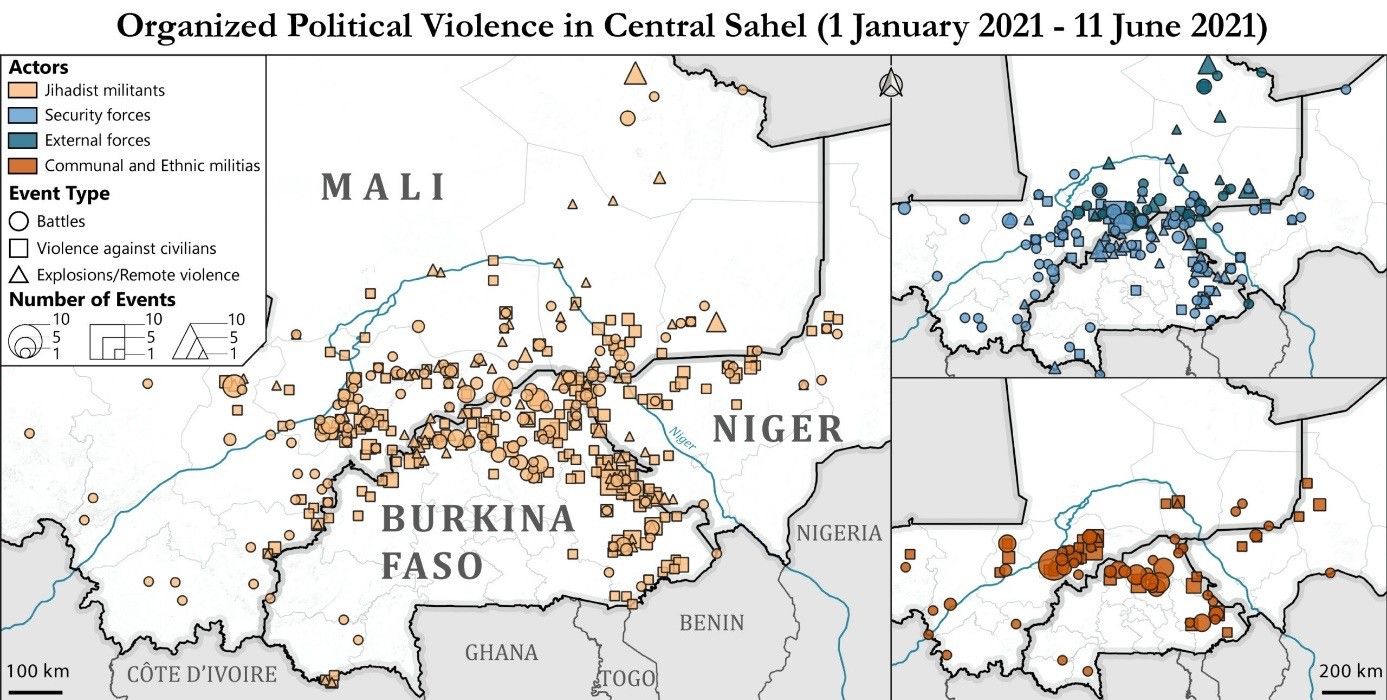
The reasons for the continuing unrest in the Sahel area are numerous, but a sample of the most prominent ones will be offered here:
Colonial history
Firstly, none of the former French colonies were well prepared for independence and remained heavily indebted to French aid also after independence. According to Martin Meredith’s thorough study of African economic history, most of the independent states emerging in 1960 (including the Sahel countries, which gained independence at the same time as the other French colonies in L’Afrique Noire), had a rough start: “Other than Côte d’Ivoire, not one of these states was economically viable. Chad, Niger and Mali were landlocked, mostly desert, thinly populated and desperately poor”[3]. The French therefore sent support, including military advisors, which again enabled France to keep a strong influence in the area, but without the burden of being a colonial power. This, however, also contributed to the strong cleptocratic traditions one has seen in several of the former colonies, as “[T]he new states were run by elite groups long accustomed to collaborating with the French. (…) Their ambitions above all lay in accumulating positions of power, wealth and status now accessible as colonial rule came to an end”.[4]
Smuggling and trade
Secondly, the enormous wastness of the area, combined with the over thousand year long traditions of informal trade over the desert does not lend itself easily to be taxed or controlled by any state. After the introductions of camel caravans over thousand years ago, the Sahara desert could be crossed, enabling trade between the Muslim traders in North Africa and the peoples south of the desert, in the Sahel – the ‘shore’ of the desert. Among the most important commodities being transported were gold, salt, slaves and new social ideas, such as the religion of Islam. These trade routes still exist today, it is even the same cities that arose from these trades over 1000 years ago that are the hubs of today’s commerce – and smuggling. The rise to provenance of trading centers of Timbuktu, Gao and Agadez were and are dependent on these trade routes, and the very same cities and hubs still have a huge role in the illicit trade of today.[5] The illicit trade undermines governance in several ways, as it deprives the state of one of it’s most important means of establishing economical sovereignty, namely through taxation. The other factor is how illicit trade and smuggling enables the rise of corruption up to the highest levels and undermines any trust between state and population. According to Sarah Chayes, who made groundbreaking research on the interrelations of corruption and extremism, it also has direct implications on security issues: “Acute government corruption may in fact lie at the root of some of the world’s most dangerous and disruptive security challenges – among them the spread of violent extremism.”[6]
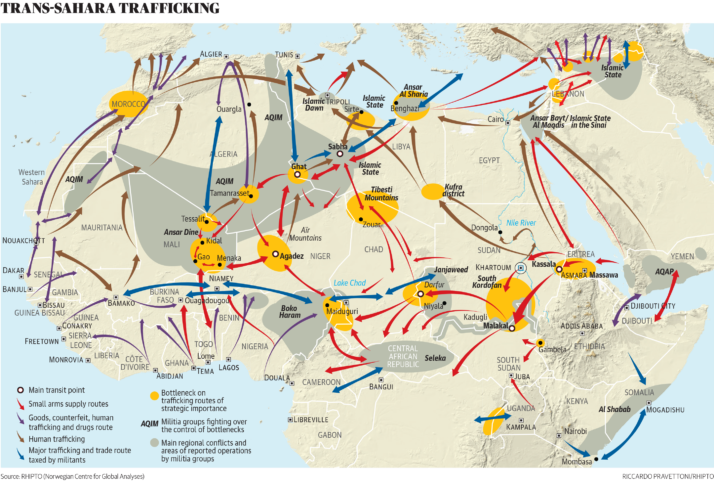
Scramble for resources
Thirdly, the combination of widespread poverty and high birth-rate is leading to a resource scramble, often along ethnic lines. Both access to water as well as to land and pasture are commodities under increased pressure, not least due to the increasingly felt climatic changes. The scramble for resources has destabilized the centuries-long co-existance of agriculture and pastoralist.[8]Here one also sees how drivers of conflict have a tendency to mutually influence each other: The high level of both ethnically motivated and terrorist violence further makes for difficult times: “(…) in the last decade, pastoralists have been confronted by numerous difficulties, notably the increasing scarcity of water and fodder, the reduction of pasture areas and the inaccessibility of corridors for transhumance.”[9]
Violent conflicts have erupted between the largely pastoralist people of “Peul/Fulani” and the agricultural Dogon and Bambara peoples, which again are a major recruiting asset for violent extremists group. The Malian officer Lieutenant Colonel Alou Boi Diarra who has made the pastoralist-agriculturalist conflict his thesis topic at the National Defence University, stated in an interview that “[R]eligion is not the primary factor in the ongoing violence. Fulani herder communities share the same Islamic beliefs as their neighboring Bambara and Dogon farmer communities. The key problem, in as far as religion is concerned, is that jihadist groups exploit the preexisting fault lines to further their objectives.”[10]
Extremist violence
This leads us to the most well-known factor of instability in the Sahel, namely the rise of both secessionist and religiously motivated extremist violence. The Tuaregs, a people living mostly in the Northern parts of Mali and Niger (with smaller groups living in Libya and Algeria), have been the subject of suppression from the governments in their respective states. A Berber tribe, their traditions and origin have always been viewed with suspicion from the capitals further south, where dominated by tribes from Western Africa. The Tuareg have at several occasions attempted to gain autonomy or even independence, but were suppressed with draconian methods both from the French colonial regime and later from the new nation states who feared further secession after having gained their independence.[11]
The aftermath of Gadaffi’s downfall
In 2011, however, a major factor changed, which ever since has been destabilizing large parts of North- and West-Africa. The Libyan dictator Gaddaffi’s violent crack-down of protests and subsequent condemnation in the UN security council led to a bombing campaign by several nations (including USA, France, UK as the main players – augmented by a number of smaller states such as Denmark and Norway)[12]. The efficiency of the campaign did lead to Gadhaffi’s downfall and the still-ongoing civil war that followed greatly destabilizes the region. The power vacuum after Gadhaffi was quickly exploited by violent extremists groups such as IS and Al-Qaida. The flow of weapons from war-ridden Libya enabled large numbers of Tuareg fighters to arm themselves - some of them former Gadhaffi-employees - they turned back home and took up the fight against the central governments in Mali and Niger[13]. In Mali, they were especially successful, as the originally rather secular Tuareg rebellion lined up with the Islamist extremists which had been present in the area for several years, often financed by the Gulf states.[14]The founder of the extremist group Ansar Eddine, Iyad Ag-Gahli, is himself from a prominent Tuareg family, and does in his very person symbolize the common cause which was made between Tuareg secularists and religious extremists in 2012. The combination of battleproven Tuaregs, large amounts of weapons, access to resources through the Saharan trade routes as well as the religious fervor of the extremist groups led to several Malian cities (Kidal, Gao, Timbuktu) being overrun in 2012. It might here be added that many Tuaregs felt betrayed by the extremist groups (who of, course, also had many Tuareg members). The extremist groups had used the rebellion for their own cause, and several secular Tuaregs were killed by the extremist after the cities had been taken. Simply put, the extremist groups had piggybacked and then hi-jacked someone elses’ revolution. And with great success, one might add – the Malian forces fled as the government lost control over large swaths of it’s Northern territory. As the Malian state seemed to be out of its depth – among others being subjected to yet another military coup, the French decided to intervene in force in order to take the cities back. Operation Serval was launched in 2012 as a full spectrum military operation, including not only bombing campaigns and targeting efforts, but also a conventional land operation, including battling back control over all occupied cities as well as spectacular incursions in the the arid mountains of the Ifoghas where it together with Chadian forces conducted clearing operations.[15]
Establishment of ISGS and JNIM
After the cities were re-taken by French forces and the violent extremists at least temporarily defeated, the secular Touareg rebellion leaders pledged to participate in a UN-mediated peace process between themselves and the Malian government. The peace process has been sluggish, but at least there has been no major reoccurrence of secular Tuareg offensives. However, the extremist groups reorganized and have since hit back. A group led by Adnan Abu Walid al-Sahraoui established an IS-franchise (ISGS-Islamic State in the Greater Sahara) in the tri-border area between Mali, Burkina Faso and Niger, being officially accepted by IS central in 2016. In a parallel move, several other groups did give new life to Al-Qaidas efforts in the region as they established JNIM in 2017, a group which ensures both coordination and control of AQ assets in the Sahel area[16]. The French had by this time already transformed Operation Serval into Operation Barkhane, which is a counter-terrorist operation with an expeditionary structure which stretches over all Sahel G-5 countries. It consists of a number of permanent and temporary bases, which allows for the French forces to have flexibility across the whole of the Sahel region. Current force-layout for Barkhane is 5100 soldiers, 7 fighter planes, twenty helicopters and a substantial number of fighting and support vehicles. [17]
The role of the international missions
In addition to the French Barkhane mission, there are a multitude of actors attempting to help stabilize the Sahel region, namely MINUSMA, EUTM, EUCAP and Operation Takuba, which will be presented below:
Most known is MINUSMA, the UN-mission which was stood up in 2013 as a replacement for a short-lived African-led mission called AFISMA.[18] MINUSMA, which has a robust charter for peace enforcement, still suffers from the challenges many other UN missions face: Too few troops (many of them not well equipped), too large a territory to oversee and too little respect from the factions on the ground. MINUSMA has been viscously attacked by extremist groups, and has to date a casuality number of 258. [19] There is also the EU-led EUTM (European Training Mission in Mali), which attempts to train the soldiers of the Malian Army (FAMa)[20]. However, also this mission has had a limited success, partly due to the limited scope of the basic training they are mandated to produce and the fact that they in no way are allowed to mentor the Malian forces in the field.[21] EU also leads EUCAP Sahel, which has a broader scope of civilian capacity-building, mostly focused on the police and judicial sector.[22]The G-5 Sahel initiative, on the other hand, sees Mali, Burkina Faso, Mauritania, Niger and Chad team up and pool some of their forces to be better suited to conduct operations over the whole area, including enabling troops from one country to cross directly into another in order to better follow terrorist groups. However, it must be noted that G-5 Sahel is starkly underfunded and that there are no additional forces being generated for this initiative. To this date, they rely on the member states earmarking forces for it.[23]
Added to this are a number of NGOs, missionaries, bi-lateral aid programs from several European nations, mentoring programs of military cooperation, and even France’s own secretive fully independent SOF operation in the area with support from US-assets[24], etc. It is hard to see a common strategy being agreed upon by all these actors.
The latest arriving actor in this theatre is Task Force Takuba, which is a French-led Special Forces operation with contributions of personnel from other European states. So far, Sweden, Czech and Estonia have committed forces on the ground, but several other countries have pledged bigger or smaller contributions[25]. The mission is mandated to mentor Malian forces, including following them on operations. Takuba was stood up in the summer of 2020 and was the first time the French have attempted to put together and lead a multinational SOF-structure. It is currently (as of autumn November 2021) being led by an Swedish officer, albeit still under overall French command - as it is officially a part of Operation Barkhane[26]. The task force was announced at the same time as the French were having a surge of personnel in the Barkhane mission, sending signals of an increased French military effort in the Sahel. For some, it was therefore a surprise to see that Macron later in 2021 suddenly announced its planned phasing out of Barkhane.[27]
France’s planned exit?
Macron’s announcement of France’s coming downscaling of its Barkhane mission is probably based on several considerations: One is purely military, keeping in mind that the French military is one of the most deployed in the world. Barkhane’s need for logistics and support are formidable, both due to the enormous area in which it operates, as well as the lack of infrastructure and the harsh environmental conditions in large parts of the area of operations. A draw-down could possibly free up both manpower and resources for the French armed forces. On the tactical level, it has been stated that Barkhane will focus on a smaller area towards the middle of Mali along the Niger river for its ground operations, which would enable greater economy of effort and a clearer burden sharing between Takuba and the rest of Barkhane (or its successor operation). The second reason is political – as the critique against French involvement in its former colonies never subsumes, Macron might have used the inability of the e.g. the Malian government to reform itself as a pretext for a downsizing and hence reducing the visibility of the French footprint. Hence, Taskforce Takuba might be given a prominent role for both the above reasons. It has been designed to be a coalition of the willing under French command, where substantial resources – including special forces, helicopters and base support- have been delivered by the coalition partners. It has also been given the operational area in the very demanding border region between Burkina Faso, Mali and Niger, an area well suited for special operations forces. Lastly, it is also possible the hectic and rather unglorious ending of 20 years of US and NATO-led operations in Afghanistan also played a role in French strategic thinking: Especially as the French are attempting to position themselves on the world stage next to a resurgent Britain with global aspirations and after being publicly humiliated after the botched submarine deal with Australia, Macron will not need a hasty and defat-like withdrawal from the Sahel.
At the same time, France and the other concerned nations will not be able to leave Mali or the Sahel to its own devices in any way the way the current situation is unfolding. But why is this so? Is the “West” not tired of international operations on far-away countries, not least due to the humiliating withdrawal from Afghanistan? Will the new power struggle concerning the Western countries not be focused against Russia and the emerging challenge from China? There are two main reason why I argue the West will need to continue to be engaged in the region:
Why Sahel remains important
The first reason is that the Sahel in its current state constitutes a major threat towards Europe, both in terms of the above-mentioned smuggling of drugs and humans into especially the Southern parts of Europe, which remains a big concern for the stability of the Mediterranean. In addition, extremist groups already operating in the area will feel empowered by the success of Taliban and have new motivation to continue. A further spread of extremism has been felt in other countries bordering on the Sahel as well (Côte d’Ivoire but one example) and there is a distinct possibility that the cooperations between terrorist groups across North and West Africa can lead to further destabilization on a larger and unprecedented scale. A safe-haven for international terrorism on the large areas of West and Northern Africa is a scenario which could get even seasoned terrorism experts to wake up in cold sweat.
The second reason is that stability of the Sahel and the resurgent great power competition is connected. Reminding of the Cold War, China and Russia have for a long time been establishing themselves very strongly on the African continent, employing different methods, either commercial incentives (China) or mercenaries (Russia) to gain access to important mineral resources. Russia has de facto gained control over Central Africa through its use of the notorious Wagner group, a mercenary group which is being extensively used by Putin to gain access with the added bonus of deniability in both in Africa and the Middle East.[28]
France and the rest of the West will therefore have no choice but to remain committed to the stabilization of the Sahel region. However, form and shape of any future engagement must be carefully analyzed. The cost of staying too long can be high as well, as the end of the 20 year engagement in Afghanistan showed. And although the Sahel and Afghanistan are very different cases, the feeling of a quagmire of never-ending operations might not evoke positive memories in Western capitals these days. It is therefore interesting that both NATO as well as the Global Coalition against Daesh are currently looking into how they could take a role in the Sahel as well[29]. The only certainty at present is that the situation in the region has been steadily deteriorating the last ten years, despite all efforts. A simple extrapolation suggest that this worsening will continue unless one of the above-mentioned factors should change, and this is as of now not very likely. How the Sahel countries and the West align their efforts will be crucial in order to seek to stop the continuing disintegration and re-start effective stabilization of the region.
Foto: youtube, 5. RHC
References:
Chayes, Sarah: Thieves of State – Why Corruption Threatens Global Security, W.W. Norton, New York, 2015
Mathis, G, 2013 in Flichy, Thomas (ed.): Operation Serval au Mali -L’Intervention francaise decrypté, Ecoles des Saint-Cyr, Coëtquidan,
Meredith, Martin: The Fortunes of Africa – A 5,000 year History of Wealth, Greed and Endeavour, Simon and Schuster, London, 2014
Olivier, Michel (2021): «Wagner - La symphonie africaine de Poutine», Jeune Afrique, No3103, published August 2021, Paris.
Røsgjorde, Richard: Marinejegerkommandoens evne til militær rådgivning, Master Thesis, University of Bergen. Available at https://bora.uib.no/bora-xmlui/bitstream/handle/1956/20606/2019-10-04-Masteroppgave-R-sjorde-kandidat-109.pdf?sequence=1&isAllowed=y
Shurkin, Michael (2014): France’s War in Mali - Lessons for an Expeditionary Army, Rand Corporation, Santa Monica. Available at https://www.rand.org/content/dam/rand/pubs/research_reports/RR700/RR770/RAND_RR770.pdf. Site last consulted 29.11.2021
Venter, Al J.: Al-Qaeda in the Islamic Maghreb – Shadow of Terror over the Sahel, from 2007, Pen and Sword Military, Barnsley, 2018
[1] I borrowed the term “epicentre of the Sahel crisis” from OCHA -the United Nations Office for the Coordination of Humanitarian Affairs. The quote is from an analysis published this summer. See https://reliefweb.int/report/mali/sahel-2021-communal-wars-broken-ceasefires-and-shifting-frontlines. Site last consulted 06.12.2021
[2] Published on ACLED’s website Sahel 2021: Communal Wars, Broken Ceasefires, and Shifting Frontlines | ACLED (acleddata.com). Site consulted on 23.11.2021
[3] Meredith 2014, p.568
[4] Meredith 2014, p.569
[5] For further details concerning the trade across the Sahara throughout the ages, see Monk, pp.70-79
[6] Chayes 2015 p. 7.
[7] The map originates from the Norwegian analysis group RHIPTO, and has been widely cited. This screen shot is from the article “Welcome to Agadez, smuggling capital of Africa”, written by Lucas Destrijker and published by POLITICO on October 17, 2016. Article to be found under this link: Welcome to Agadez, smuggling capital of Africa – POLITICO. Site consuled on 23.11.2021.
[8] Pastoralists are nomadic herders, who usually rotate through grazing lands. For more information, see the UN’s informative website, «The Pastoralist Knowledge Hub», at https://www.fao.org/pastoralist-knowledge-hub/what-we-do/en/. Site last consulted on 29.11.2021.
[9] Bisson 2020, p.1
[10] Interview with Alou Boi Diarra, Africa Center for Strategi Studies, 2019. Website consulted 22.11.2021. Farmer-Herder Violence in Mali – Africa Center for Strategic Studies
[11] See Venter 2007, pp 71-72.
[12] The operation actually started as a form of «coalition of the willing», then it turned into a NATO mission named «Unified Protector”, although not all member countries did contribute in equal force. Also note that non-NATO nations such as Sweden, Qatar, The Arabic Emirates and Jordan participated with a number of capacities.
[13] A.J. Venter wrote the following on the relationship between Gadhaffi and the Tuaregs:”What is not generally known is that tens of thousand of Tuaregs served in the Libyan armed forces over several decades. Once they had proved to Gaddafi that they were loyal and trustworthy he, in turn, accorded them the kind of priviliges they could never achieve in their own countries in the Sahel. See Venter 2007, p. 67
[14] See Mathis, G, 2013.Operation Serval au Mali -L’Intervention francaise decrypté, Ecoles des Saint-Cyr Coëtquidan,
[15] See Shurkin 2014, pp.38-39.
[16] Al-Qaida and other violent islamist extremist groups has been present in the Maghreb for several years. Starting out from the islamist extremist opposition in Algeria (GIA and GSPC) during the Algerian civil war, Al-Qaida established itself via the subgroup AQIM (Al-Qaida in Islamic Maghreb) in 2007. See the European Council’s excellent overview over armed groups in the Sahel at this website: https://ecfr.eu/special/sahel_mapping/aqim. Site last consulted 29.11.2021
[17] Barkhane has mandate to conduct operations in all G-5 Sahel states. See the official website for further details of the force lay-down at https://www.defense.gouv.fr/operations/afrique/bande-sahelo-saharienne/operation-barkhane/dossier-de-reference/operation-barkhane. Site last consulted at 29.11.2021
[18] https://minusma.unmissions.org/en/history
[19] https://peacekeeping.un.org/en/fatalities
[20] FAMa stands for «Forces Armées Maliennes»
[21] Mentoring is usually most successful when applied “shoulder to shoulder”, as has been exemplified among others by the Norwegian SOFs mentoring of the Afghan CRU-222, which during its years of operation did successfully intervene in a large number of terrorist attacks. See Røsjorde 2019.
[22] See EUCAP’s factsheet for a comprehensive overview: https://eeas.europa.eu/sites/default/files/factsheet._english_2021.pdf. Site last consulted 03.12.2021
[23] See this article from «The Conversation» for an overview of the challenges facing the Sahel G-5 initiative: https://theconversation.com/the-g5-joint-force-for-the-sahel-was-set-up-four-years-ago-why-progress-is-slow-167812. Site last consulted on 28.11.2021
[24] It is these units that were behind some of the most spectacular hostage rescue operations as well as the terrorist hunting operations of the latter years.
[25] See the number of countries who signed the political statement creating Takuba here:https://www.coalition-sahel.org/en/la-task-force-takuba-est-lancee/?lang=en. All these countries have however not committed troops yet - there are e.g. currently no Norwegian troops contributing to Task Force Takuba. Site last consulted on 29.11.2021
[26] See the official communique concerning the transfer of command of Takuba to the Swedish Forces here: https://www.defense.gouv.fr/operations/afrique/bande-sahelo-saharienne/operation-barkhane/breves/barkhane-task-force-takuba-la-france-passe-le-commandement-a-la-suede. Site last consulted at 29.11.2021
[27] The coming laydown of the French forces in the Sahel remain at the time of writing to still to be seen. For Macron’s original announcement of the drawdown, see here: https://www.rfi.fr/en/africa/20210610-macron-announces-major-overhaul-of-france-s-operation-in-sahel-islamist-burkina-faso-chad-mali-mauritania-niger
[28] According to research conducted by Jeune Afrique, the Wagner group is among others supposed to be present in the Libyan civil war, operating in Sudan against rebels, securing diamond mines in Angola aswell as having an estimated 2.000 mercenaries on the ground in Central Africa, conducting own operations against rebels as well as also here securing diamond and gold sites. Olivier 2021 p.46.
[29] NATO has so far a partnership with Mauritania, see more here: https://www.nato.int/cps/en/natohq/news_185516.htm. Site last consulted 03.12.2021. For an article on the Global Coalitions’ beginning interest in Africa, see here: https://www.voanews.com/a/europe_global-coalition-fears-islamic-state-expansion-africa/6207584.html. Site last consulted 03.12.2021.


